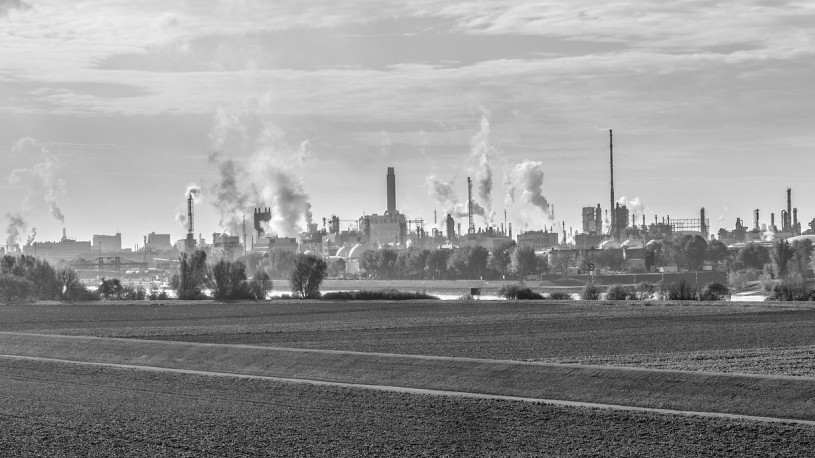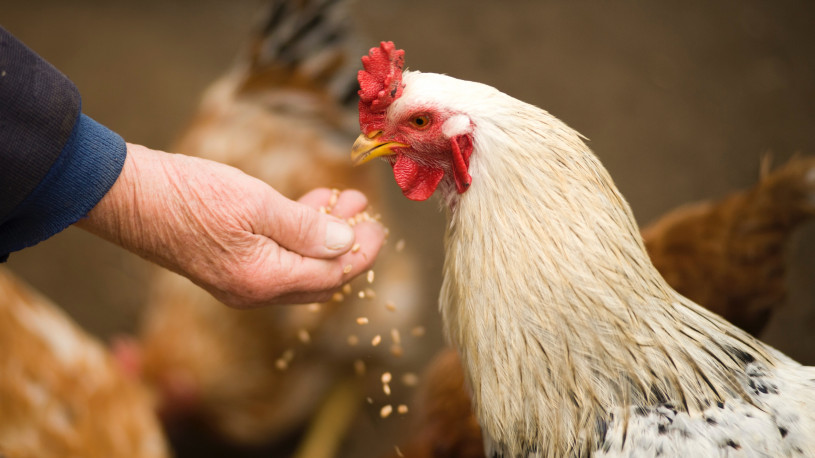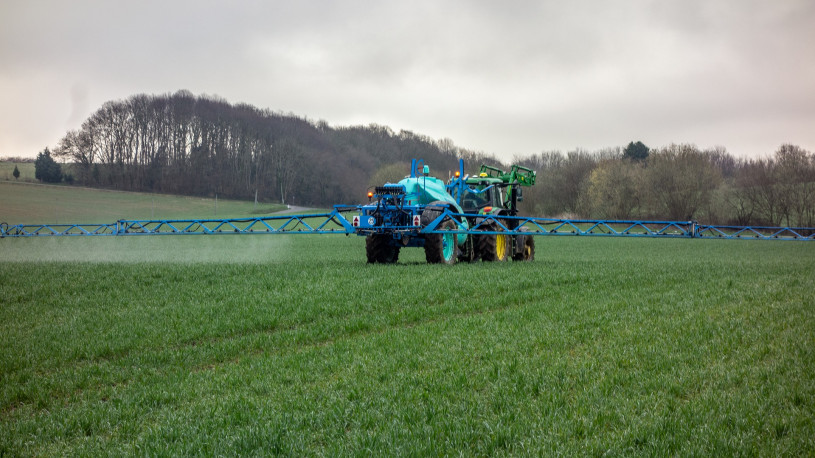-
Are there Storm Clouds on the Chemical Industry Horizon?
 Continue Reading
Continue ReadingEver since the gloomy days of the 2008 global financial market crash and subsequent economic depression, the chemical industry has been on the up and up. Demand for a wide range of chemical products has been rising, chemical company profits have risen, and companies have built new facilities all over the world.
The outlook also looked rosy, for while the economic picture in Europe looked sluggish, consumers there were seen as still heavily reliant on chemical products. The Far East was still predicted to have double-digit growth, North America was enjoying a boom in chemical production from shale gas by-products, while South America and Africa were predicted to be entering a more modern era of the consumer society.
The future looked bright.
But now some chemical industry experts are predicting a gloomier future; a period of reduced growth (possibly even contraction), with both smaller profits and production. These are the predictions from a chemical industry team from the McKinsey consultancy, who state in their report that, “Looked at globally, we estimate that the last decade’s 3.6% growth rate for petrochemicals may go down by between 0.5 and 2.0 percentage points over the next 10 years, depending on assumptions for regional GDP growth.” Before adding that, “For an industry with an estimated capacity creep somewhere between 1 and 2% annually, this could be a dramatic shift.”
So why has the chemical industry, up until now, been such a strong sector? What has changed?
Chemical Industry Strengths
Simplifying the strengths of an entire industry is far from easy, especially one that is as diverse and global as the chemical industry is. But the report was still able to summarise that, “impetus behind the industry’s strong performance” since the financial crash of 2008 is from, “ … the chemical industry’s ability to significantly increase earnings on a base of total revenues and invested capital that has grown more slowly, at a rate tracking close to global GDP growth.”
The report claims that this ability is based on three key factors. Crucially, two of these factors are fading, giving the authors their pessimistic outlook.
1. China’s Economic Boom.
The industry has been spurred on by the exceptional growth in the Chinese economy. As the new ‘workshop of the world’ China was desperate for chemicals to feed its booming manufacturing industry, allowing for European and American producers to export.
The economic boom in China also led to a housing boom, as the population flooded to cities for work, further fueling expansion in the construction chemical sector.
However, as economic growth has begun to slow, the chemical industry will lose its biggest growth factor.
2. An Historically Fractured Industry.
For many years, the chemical industry has enjoyed a situation of concentrated markets which has enabled high productivity and product value. Other industries which have increased productivity, have had increased competition that has priced away production improvements.
The chemicals industry, on the other hand, has not competed itself to death. As the McKinsey report notes, “The chemical industry increased its productivity over time and has distinguished itself by holding onto the resulting profitability gains, unlike many other industries that also raised productivity but simply competed the gains away.”
However, over the past few years, an increasing number of mergers and acquisitions, coupled with a growth in SME’s in developing countries, have begun to remove this advantage. This is particularly evident in the Chinese chemical industry, which is beginning to become more independent of Western investment. This has led to increased competition in the region, reducing the need for imports, which is creating overcapacity elsewhere.
3. The Chemical Industry Enables the “World of Things.”
Without chemicals, very few things can be made. Almost everything in and of the room you are sitting in now, was made with the help of chemicals. Modern consumer society is built on chemicals, but while this does ensure a continuation of the industry, it does not ensure continuous growth.
While some may point to new advantages being found in North American shale gas, or the removal of Iranian sanctions, those benefits will be short-lived. As Nigel Davis, Insights Editor at ICIS, speculated on the report via the Elsevier website, that, “Some companies have been able to tap in to the gas-based feedstock advantage in the Middle East and, most recently, in North America but it is clear that those opportunities are limited in terms of volume and availability over time.”
So while the chemical industry has strong advantages, each of these factors has a weakness. While many see the chemical industry as robust, theoretically, it is not as strong as it may seem.
There will be skeptics, of course, who doubt the validity of the McKinsey authors’ pessimism, but they are encouraged to see the proof of the chemical industry’s retraction.
Read part 2 of this article by clicking here to learn of the Evidence of the Beginning of the End for Chemical Industry Growth.
Photo credit: sciencesmith
-
Demand for ‘Slower Growing Broiler Hens’ to Increase Feed Prices
 Continue ReadingFor many years, there has been a growing trend in meat markets for produce from livestock and birds that have been raised in above standard conditions. One need only look at the increased demand for free range eggs and organic produce, to see that animal welfare is a key priority for shoppers.
Continue ReadingFor many years, there has been a growing trend in meat markets for produce from livestock and birds that have been raised in above standard conditions. One need only look at the increased demand for free range eggs and organic produce, to see that animal welfare is a key priority for shoppers.But now it seems that consumer demand has taken this to the next level, with a growing number of restaurant chains promising to source their meat products more carefully. This trend took a big step forward in December 2016, when the cafe chain, Pret a Manager, pledged on their website that, “by 2024 we’ll ensure 100% of our chicken is produced using Global Animal Partnership (GAP) standards.”
More recently, household names, such as Subway and Ruby Tuesday, also declared their intentions to source chicken meat from birds that have been more ethically raised. This includes improved living conditions for poultry, such as better lighting, and lower density living, as well as more humane slaughter techniques. But more significantly for poultry feed suppliers and manufacturers, as the industry journal Farmer’s Weekly reports, is the desire, “to introduce slower growing chicken breeds.”
‘Slower growing’ has been defined by the Global Animal Partnership (GAP), as a rate of growth “equal to or less than 50 grams of weight gained per chicken per day averaged over the growth cycle,” this is compared to the current industry average of approximately 61 grams per day.
The idea to switch to slower growing breeds is, as the GAP states, “[Because] rapid growth rate has significant impacts on the welfare, including health, of chickens.” However, they also note that, “Since birds do not gain weight linearly, thresholds for maximum daily weight gains may not be an effective measure.” They also warn that more research is needed.
While many people both inside and outside the poultry industry agree that improved standards for birds is a positive step, there are concerns that the increased farming of slow growing broiler hens has too many disadvantages to be called ‘progress’.
For example, Ashley Peterson, Ph.D., senior vice president of scientific and regulatory affairs at the National Chicken Council (NCC) in America, said recently that, “These improvements must be dictated by science and data – not activists’ emotional rhetoric – which is why we support further research on the topic of chicken welfare and growth rates.”
Meanwhile, Fabian Brockotter , editor of the industry journal Poultry World, quotes the NCC research in stating that, “In assessing a transition to a slower growing breed, the environmental impact is an important component often left out of the equation. If only 1/3 of broiler chicken producers switched to a slower growing breed, nearly 1.5 billion more birds would be needed annually to produce the same amount of meat currently produced – requiring a tremendous increase in water, land and fuel consumption.”
The industry experts Watts, also reported on the NCC study, outlining that, “The additional land needed to grow the feed (corn and soybeans for 1.5 billion extra birds with longer lives) would be 7.6 million acres/year, or roughly the size of the entire state of Maryland.” They also add that, “5.1 billion additional gallons of water per year [would be needed] for the chickens to drink (excluding additional irrigation water that would be required to grow the additional feed).” And that, “Slower growing chickens will stay on the farm longer, producing 28.5 billion additional pounds of manure annually.”
Most importantly for feed suppliers, however, is that a lot of additional feed would be needed. In fact, the NCC commissioned study by Elanco Animal Health estimates that the feed required would be, “Enough to fill 670,000 additional tractor trailers on the road per year.”
And while the report does not give a dollar value for this amount of feed, it does estimate that the total cost of rearing slower growing breeds to the chicken farming industry in America would be $9 billion. If only half of this total was spent on feed, then feed manufacturers and suppliers may be on the verge of a golden age of production growth.
While this might cause panic to any chicken farmer reading this, the likelihood is that most or all of this cost would be passed on to the consumer. And with 1.5 billion extra chickens needed for the US market, there will be plenty of opportunities for poultry farmers, chicken breeders, and animal feed suppliers to make extra profit.
Public perception of the livestock farming industry has been on a downward spiral for some time. Animal rights groups release videos of some shocking conditions that farm animals are kept in, which negatively impacts the reputation of the entire industry. While public opinion of these conditions may be far from the true way that most animals are reared, it is significant that major restaurant chains are taking the public step and extra cost to source slower growing broilers.If this trend continues, then it is possible that all birds eaten in the future will be from slower growing breeds, which should be good news for everyone in the industry. If consumers are willing to pay for improved bird conditions with longer lifetimes, then more farmers will be needed to rear the greater number of birds needed to meet demand. More feed will be needed for each bird, as they will live longer, and perhaps most importantly, the birds will be happier for living longer in improved conditions.
Happy, healthy birds lead to a happy, healthy poultry industry, which provides for a happy, healthy animal feed market.
Photo credit: YouTube & Becky’s Homestead
-
Fertilizer Research finds Link between Crop Residue in Fields and Nitrogen Uptake in Crops
 Continue Reading
Continue ReadingA recent study by fertilizer experts from the University of Western Australia has shown that there is a direct link between crop residue and nitrogen availability in crops. While the study analysed only nitrogen application and uptake in wheat, it is likely that a similar effect takes place across all crop types.
The research paves the way for farmers and fertilizer manufacturers to develop techniques and application methods that could prevent nitrogen fertilizers from coming into contact with plant residues. This would increase efficiency, limit waste and by reducing run off, be better for the environment.
The research was conducted by Nathan Craig, in a study supported by the Grains Research and Development Corporation (GRDC), a government funded research foundation that aims for, “improvements in production, sustainability and profitability across the Australian grains industry.”
Reporting on the breakthrough, the industry journal Agronomist and Arable Farmer stated that, “The aim of the study was to quantify the supply of nitrogen to wheat crops from the soil and crop residue and determine the effect on grain yield and grain nitrogen uptake – in a monoculture wheat rotation and a chickpea-canola-wheat rotation.” Adding that, “Research was conducted at the Western Australia No-Tillage Farmers Association (WANTFA) long-term no-tillage trial site at Cunderdin in WA’s central grainbelt.”
Craig’s study showed the clear benefits of applying nitrogen fertilizer, when it concluded that, “Across the three seasons tested, there was an overall benefit of applying nitrogen fertilizer to monoculture wheat, which increased grain yield and grain nitrogen uptake in most years, and effectively closed the yield gap between wheat grown in monoculture and wheat grown in rotation with legume crops and with no nitrogen fertilizer added.” However, Mr Craig also added that, “The application of nitrogen fertilizer actually reduced the mineralisation of nitrogen in the soil in the monoculture wheat system, whereas in the rotated wheat system there was less effect.”
But most interesting in the study, was the impact that the left over plants and pieces of crop from previous seasons had on nitrogen levels in the soil. Something that Craig outlined when he said, “While retaining crop residue is known to improve nutrient recycling in no-tillage systems in the longer term, the potential for nitrogen to be immobilised in the short term during decomposition by microbial activity could provide significant competition for plant available nitrogen in the soil during the growing season.”
Craig also added that, “More importantly, when soil mineral nitrogen levels were low at seeding, and the crop residue carbon-to-nitrogen ratio was high, there was a high risk of immobilisation of nitrogen in both of the wheat systems.”
If the research results hold true, then there is a clear opportunity for farmers to reduce nitrogen fertilizer needs by adapting new crop management techniques, or by applying the fertilizer in a different, more effective way, so that it avoids contact with crop residue, or avoids the soil surface where mineralisation of nitrogen is concentrated.
One such technique that Craig himself suggested was, “An annual sampling program could be conducted at the start of each growing season to determine the carbon-to-nitrogen ratio of the crop residue mix left on the soil surface, and the amount of nitrogen in the soil to a depth of 10cm. From this, you could estimate the potential for immobilisation of nitrogen following fertilizer application.” This could, Craig claims, “be achieved using existing technology where additional nitrogen fertilizer is applied at seeding and ‘banded’ below the seed at a depth greater than 5cm, rather than an in-crop broadcast application during the season.”
Craig believes that this would increase the efficiency of uptake of nitrogen in crops, meaning that less fertilizer would be needed.
While there has already been a great deal of study in the fertilizer industry to find more efficient ways to apply agriproducts, this discovery will further increase pressure on nitrogen fertilizer suppliers and manufacturers to find a more effective way to get nitrogen products to crops. The three year analysis of mineralization and nitrogen uptake in wheat gives a key insight into exactly where and how so much nitrogen fertilizer is being wasted.
By analysing exactly where in the soil nitrogen is most available for crops, then perhaps the industry will also be able to develop a more effective method of applying such a vital product. However, if this research is accepted fully by the fertilizer industry, then one question remains: should fertilizer manufacturers develop an improved application method to help crops absorb more nitrogen, or is it purely the farmer’s role to consider the effect of crop residue on nitrogen fertilizers?
Photo credit: Grains Research and Development Corporation
